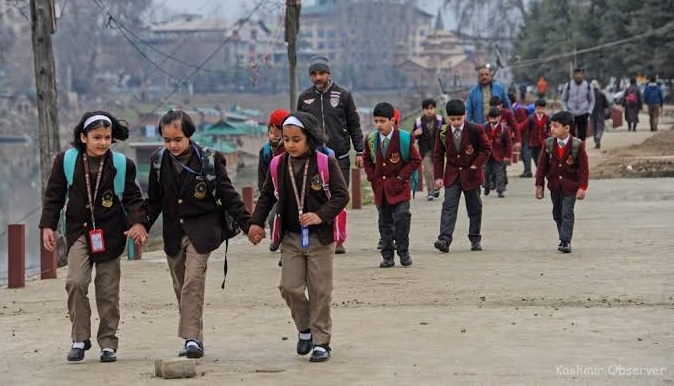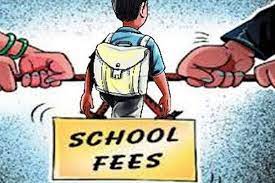Winter vacations in Kashmir schools are expected to begin in a phased manner from the first week of December, starting with primary classes. Final dates will depend on weather conditions.
Javid Amin | Srinagar | November 13, 2025
A Winter Break Ahead
As temperatures in the Kashmir Valley begin to plunge and the first hints of the winter chill set in, families are turning their attention to a familiar but significant shift: the impending winter vacations in schools. According to the latest information from the Directorate of School Education Kashmir (DSEK), schools in the valley are expected to begin their winter recess in a phased manner starting from the first week of December.
This anticipated break comes at a time when both parents and schools are balancing academic schedules, weather concerns, and the need for continuity in learning. For parents, being informed about the schedule, why the break is staggered, and how to plan can make a difference in easing household logistics and children’s routines.
In this article, we unpack the emerging winter vacation schedule, the reasoning behind the phased approach, the weather context, and practical tips for parents in Kashmir to stay ahead of the curve.
The Tentative Winter Vacation Schedule
Primary Classes (Up to 5th Standard)
For the youngest learners — those in primary classes up to Class 5 — the winter break is likely to begin from the first week of December. DSEK sources indicate that the department wants these classes to finish a minimal portion of the new academic syllabus before closure and then allow students an early break.
Classes 6th to 12th
For students in Classes 6 through 12, vacations are expected to begin from the second week of December. The precise dates, however, will depend on ongoing weather developments in the region.
Why the Dates Are Still Tentative
The DSEK is monitoring the meteorological data closely. The academic year has already begun, and authorities wish to ensure at least 10 % of the syllabus is covered before the break commences. At the same time, they wish to provide a safe environment for students as temperatures drop.
Why a Phased Approach This Year?
Balancing Academic and Safety Needs
The decision to adopt a staggered schedule—first for younger classes and then for older ones—is driven by two main factors:
-
Academic Coverage: Authorities want schools to complete a meaningful chunk of the new academic session before the winter break begins, so students are not returning after holiday without having settled into the year’s schedule. DSEK sources indicate a target of around 10% syllabus coverage.
-
Weather-Safety Concerns: With winter setting in early and nights going into sub-zero, the logistics of commuting, classroom maintenance, and student well-being become more challenging. Younger children are more vulnerable to disruptions, hence the earlier break helps mitigate certain risks.
Adjusted School Timings
In conjunction with the upcoming vacation, schools have already implemented adjusted timings to cope with colder weather. For example, in Srinagar city the schedule is shifted to roughly 10:00 AM to 3:00 PM, and outside the city the starting time is around 10:30 AM to 3:30 PM. These shifts help avoid the harshest early-morning cold and ensure safe travel for students.
The Weather Context: Why Timing Matters
The Kashmir Valley does not wait for formal holidays to announce winter. The region is already seeing plunging temperatures — in Srinagar the night temperature recently hit –2.1 °C, marking the season’s coldest yet.
Also worth noting is the looming period of “Chillai Kalan” — the often-cited 40-day intense winter phase beginning around 21 December, when sub-zero conditions are the norm and snow/ice create significant disruptions.
For schools, managing student safety, travel to and from school, warmth in classrooms, and utility functioning becomes more difficult at this time — hence the impetus to schedule vacuations in a way that accommodates these factors.
What It Means for Parents: Planning Ahead
For Younger Children
If your child is in a primary class (up to 5th standard):
-
Expect the winter break to begin in early December. Use this window to ensure all school materials, transport arrangements, and home study setups are in place before the break begins.
-
Check with the school about last teaching days, homework expectations, and any additional activities before the break.
For Older Students (Classes 6-12)
-
The break may begin a little later (second week of December), so plan accordingly. Ensure your child completes scheduled exams, assignments or projects before the break.
-
If your child uses transport, revisit schedules, pre-holiday travel safety (especially with colder, potentially icy roads), and arrival/departure timings.
Household & Logistics Preparation
-
If your home is in a zone prone to snow/ice or utility disruptions, ensure your heating, water supply and travel routes to school are checked in advance.
-
Plan for activities during the break — though it is a holiday, maintaining a light study schedule helps children remain ready when school resumes.
-
Communicate with your school to clarify how the syllabus and upcoming session are structured, especially since the new academic year is fresh and your child will pause after only a few weeks of study.
What Schools Should Communicate — And Parents Should Ask
Key Questions to Schools
-
What is the exact date for the winter break for each class?
-
What portion of the syllabus has been completed before the vacation?
-
How will the academic calendar proceed after the break? Will there be catch-up classes or acceleration?
-
Are there any special transport arrangements given the colder weather?
-
What alternative arrangements exist if adverse weather delays reopening?
-
How will students be assessed when they return, given the break?
What You Can Ask from School
-
A written circular or notice of the holiday schedule and any changes.
-
Clarity on how the school is managing student safety, heating/classroom conditions, and transport in winter.
-
Homework/reading resources for the break period, so learning continuity is maintained in a light, positive way.
-
Information on how the syllabus will be managed — will classes be extended, will extra tuition be required, etc.
Best Practices to Make the Most of the Break
-
Set a light home-study plan: Even a short daily reading or review schedule keeps momentum.
-
Encourage physical activity: Winter does not mean being sedentary — indoor exercises, simple routines help children stay active.
-
Monitor sleep and nutrition: Change in schedule can disrupt sleep. Make sure your child keeps regular bedtime and healthy meals.
-
Safety first: If your area gets snow or frosty conditions, ensure your child is suitably clothed for any travel, and check transport arrangements.
-
Use the time for family bonding: The break is an opportunity for parents and children to spend quality time, reflect on the new academic year’s goals and prepare mentally for the return.
Possible Challenges & How to Mitigate Them
-
Delayed reopening due to weather: Schools may need to postpone reopening. Stay in touch with the school’s communication channel (WhatsApp, email, portal) for real-time updates.
-
Syllabus backlog: After a break, students may feel “out of orbit”. Ask the school about catch-up measures, and spend some time reviewing earlier lessons.
-
Transport disruptions: Cold weather may affect transport. Confirm winter-specific transport arrangements and possible contingency.
-
Home-study fatigue: A long break can cause laxity. Maintain a flexible but steady study rhythm.
Broader Context: Why Kashmir’s Winter Break is Unique
Kashmir’s geography, climate and schooling system impose certain unique conditions:
-
The onset of winter is earlier and harsher than many parts of India, so schools need to plan holidays and academic calendars accordingly.
-
Many regions face transportation, infrastructure and accessibility issues during winter, which affects attendance, safety and continuity.
-
In recent years, the education department has tried to align vacation schedules with climate realities, but the annual syllabus pressure and rising expectations from parents and students add complexity.
Looking Ahead: What to Expect When Schools Reopen
-
Schools may adjust their timetables (shorter hours) to cope with cold daylight and travel.
-
There might be revised academic calendars — schools could use the break to reorganize resources, plan modules, or restructure teaching for the rest of the year.
-
Parents should ask how the school plans to cover the syllabus missed due to the break, and whether extra support/tutoring will be offered.
-
Pay attention to announcements around result dates (for pre-break assessments), transport changes, and any winter-specific charges (heating, transport surcharges) that might creep in.
Final Thoughts
For parents in Kashmir, the announcement of winter vacations is both expected and important. It represents a pause in the academic year — one that offers both relief and responsibility. Relief, because families and schools get a chance to reset; responsibility, because the quality of that break and the preparation around it can influence the rest of the year.
By staying informed, asking the right questions, planning logistics, and establishing a smooth transition for children, parents can turn the winter break into a positive chapter — not a disruption.
As the winter season deepens and classrooms quiet down for a few weeks, let this vacation be a time of rejuvenation, reflection and readiness for the year ahead.



